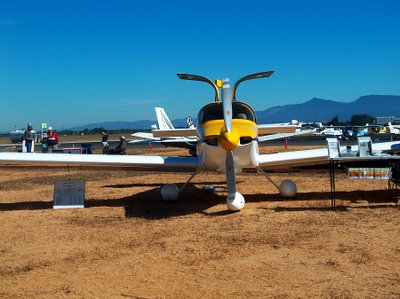First some facts about Crater lake from the US Geological Survey Website
Facts about Crater Lake
Feature | Metric unit | Imperial unit |
| maximum depth (July 2000) | 594 m | 1,949 ft |
| maximum depth (Year 1959) | 589 m | 1,932 ft |
| minimum depth (near Phantom Ship) | 5-8 m | 15-25 ft |
| average depth | 350 m | 1,148 ft |
| max diameter of caldera at the rim | 9.7 km (east-west) | 6.02 mi (east-west) |
| min diameter of caldera at the rim | 7.3 km (north-south) | 4.54 mi (north-south) |
| surface area | 52.9 km2 | 20.42 mi2, 13,069 acres |
| highest peak in the park (Mount Scott) | 2,721.6 m | 8,929 ft |
| highest peak on the rim (Hillman Peak) | 2,484.4 m | 8,151 ft |
| average height of the caldera rim | 2,188 m above sea level (305 m above lake surface) | 7,178 ft above sea level (1,000 ft above lake surface) |
| record clarity depth (August 1994) | 40.8 m | 134 ft |
| average clarity depth | 27.4-30.5 m | 90-100 ft |
Crater Lake is filled with rain and melted snow that fell within the caldera basin. Crater Lake is isolated from surrounding streams and rivers, thus there is no inlet or outlet to the lake. Its primary input is from annual precipitation in the region. Average annual precipitation is 168 cm (66 in); average annual snowfall is 13 m (44 ft). It took approximately 250 years for the lake to fill to today's level (~1,883 m or ~6,178 ft above sea level). The lake maintains its current level because the amount of rain and snowfall equals the evaporation and seepage rate. Lake level has varied only over a range of 5 m (16 ft) in the past 100 years.
Crater Lake is known to be the deepest lake in the United States and the seventh deepest in the world. A maximum lake depth of 608 m (1,996 ft) was recorded by a group of USGS representatives in 1886 using piano wire and lead weight. The maximum depth of 589 m (1,932 ft) was established in 1959 by the USGS using sonar measurement. This depth is referenced at the surface elevation of 1,882 m (6,176 ft). But since its primary input source is dependent upon the climate, lake level is subject to abrupt changes. Crater Lake partially fills the collapsed caldera of the ancient Mount Mazama Volcano. The caldera is a bowl-shape depression of about 1,219 m (4,000 ft) deep.
The maximum depth of Crater Lake recorded at the time of the July 2000 multibeam survey was 594 m ( 1,949 ft). The lake level had an elevation of 1,883 m (6,178 ft) above sea level at the time of the survey. The lake level of Crater Lake fluctuates according to the climate.
The record clarity of Crater Lake was measured at a depth of 41 m (134 ft) in August 1994. The lake clarity is measured with a secchi disk, a black and white disk lowered into the water with a cable. Its exceptional clarity is mainly due to its isolation from streams and rivers. There is no incoming stream to bring any organic materials, sediments, or chemicals to pollute the lake, although natural plankton in the lake and wind-borne pollen have seasonal effects on water clarity. Particulate materials and chemicals are mainly introduced into the lake through precipitation and run-off of the calderal walls. The caldera wall is composed of volcanic rocks that do not react with or dissolve easily in cold water, although warm water escaping from the caldera floor adds a small amount of dissolved solids.

We stopped on the way in a town called Chemult, Oregon. Chemult is on Highway 97 between Highway 58 where we were camping and Highway 138 that took us into the park. Next to the cafe we found was this interesting fence.

The cafe was the "Big Mountain" Cafe though I'm not sure which mountain it was referring to since there were many around.

They did have this cool chainsaw art eagle just outside the door. The breakfast was good but not Brennan's and it hit the spot.

One of the "Big" mountains around was the 9,182 foot Mt Thielsen which we could see just after taking the Rim Drive around Crater Lake.

Our first view of the lake was pretty awesome. There was a haze today from a fire to the south of the park that made it really difficult to take pictures but I got a few good ones. Remember to click on the pictures for a larger view then use your browser's back button to return to the blog. What you are seeing is the rim of the crater with Wizard Island in the center of the picture.

Another picture of Wizard Island with a raven flying by to get attention and handouts from the tourists at the overlook.

There are beautiful coves all around the lake and here you can get an idea of how high the crater rim is from the lake.

I found the rock walls around the lake fascinating and probably an geology semester 's worth of study. From this black and brown rock....

...to this grayish brown pinnacle..

Scrabble Queen really liked this twisty tree growing out of this out outcropping.

Then there was this reddish/orange/tan rock that had very smooth surfaces.

I like this view back down the Rim Drive with the lone pine and the highest area of the rim in the background.


There were also some really nice fall colors to blend with the deep blue lake and green pines.

Just spectacular.............

.. and guess what - the nice folks that run P&J Disposal Services in Creswell were there as well. We ran into them at this lookout and I got them to give me a group photo. Wonderful people even if dad had the camera I'd die for *lol*. It's a Cannon DSLR (Digital Single Lens Reflex)

Pumice Castle is the name of the bright orange rock in the middle of this rock face.

Later we came upon the "Phantom Ship" a small island in the lake.

You have to give it to the forest service for trying to protect those oblivious to what should be obvious. Duh! - after seeing the height of the rim walls would you get close enough to fall? If so heed this sign.

It's no wonder Crater lake was one of the first National Parks and has been for almost 100 years.

Wizard Island from the South Rim.

I hope this person is listening to their I-Pod and not out for the count. Sitting on the veranda of the Crater Lake lodge with the wonderful view surely must have overwhelmed him.

A Clark's Nuthatch perched in a pine begging for crackers and peanuts from the tourists.

I think this chipmunk is trying to get into the action as well.

Gnarled old dead trees are interspersed with their younger counterparts all along the rim.

Sometimes it's hard to tell which are the most impressive.

One last view of the rim and lake before we head back to Casey's.

Out of the park on the long straight stretch of highway 138 looking east and only 2 hours to see our Musemobile and rest.






























